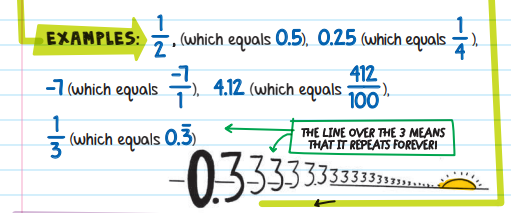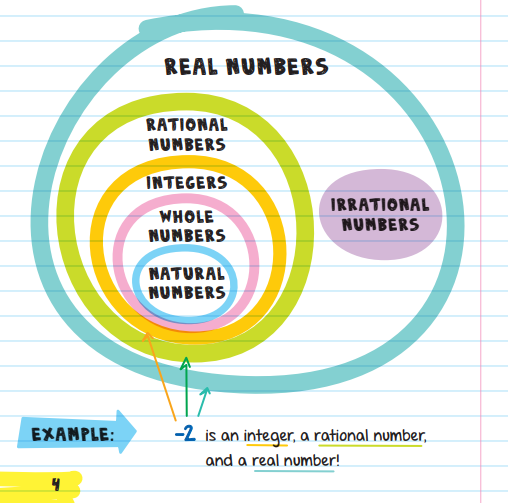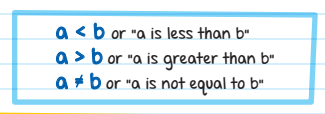Chapter 1-14 : Types of Numbers (Review)
1/22
There's no tags or description
Looks like no tags are added yet.
Name | Mastery | Learn | Test | Matching | Spaced |
|---|
No study sessions yet.
23 Terms
Whole Numbers
A number with no fractional or decimal part. Cannot be negative
Natural Numbers
Whole Numbers from one & up (counting numbers)
Integers
All whole numbers (including positive & negative numbers)

Rational Number
Any number that can be written by dividing one integer by another (can be written as a fraction or ratio)
Irrational Numbers:
A number that cannot be writ ten as a simple fraction (because the decimal goes on forever without repeating).

Real Numbers:
All the numbers that can be found on a number line. Real numbers can be large or small, positive or negative, decimals, fractions, etc.
The Opposite of Opposites Property
the opposite of the opposite of a number is the number itself!
Absolute Value
distance from zero (on the number line)
absolute value is always _____.
positive
operations inside the absolute value bars
you must complete the operation inside them first, then take the absolute value.
What happens when there is a negative symbol outside an absolute value bar?
you evaluate the expression inside the bars first, then apply the negative symbol.
Variable
a letter or symbol used in place of a quantity we don’t know yet
Factors
integers you multiply together to get another integer.
Prime Numbers
a number that has only two factors (the number itself and 1 )
Any factors that are the same for two (or more) numbers are called ___.
Common Factors
GREATEST COMMON FACTOR
The largest factor that both numbers share is called the
COMMON MULTIPLES
any multiples that are the same for two (or more) numbers are called
LEAST COMMON MULTIPLE
the smallest multiple
3 types of fractions:
Proper fractions
Improper fractions
Mixed numbers
RECIPROCAL
any number multiplied by its reciprocal equals
inequality
a mathematical sentence that is used to compare quantities and contains one of the following signs:

RATIO
a comparison of two quantities.
